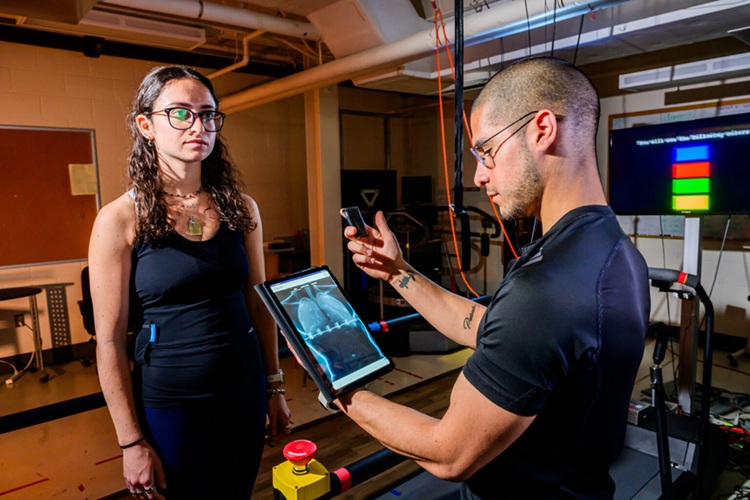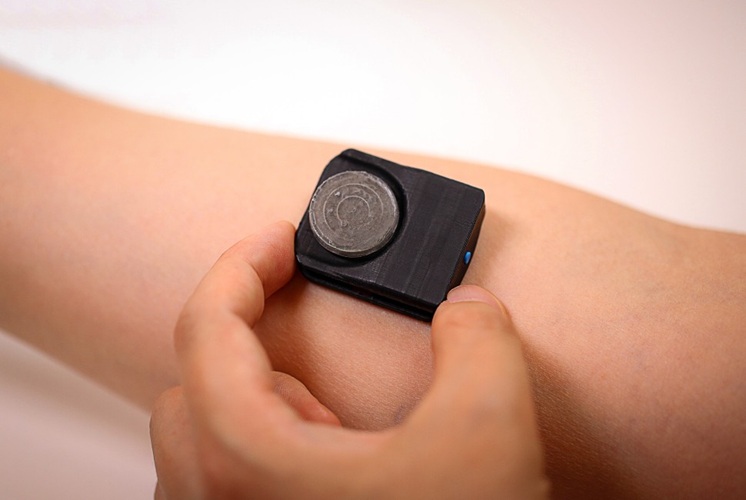RFID Tags Found to Interfere With Hospital Equipment
|
By HospiMedica staff writers Posted on 07 Jul 2008 |
A new study claims that radio frequency identification devices (RFIDs), increasingly being used in hospitals to identify patients and track medical supplies, are interfering with medical equipment such as pacemakers and ventilators, and may be putting patient safety, and sometimes lives, at risk.
Researchers at the University of Amsterdam (The Netherlands) tested a total of 41 medical devices such as ventilators, syringe pumps, dialysis machines, and pacemakers, in 17 different categories from 22 different manufacturers during May 2006. The researchers used two types of RFID equipment, active and passive (active RFID tags transmit information whereas the passive type of RFID has to be read by a special receiver). Incidents of interference were classed into three types: hazardous, significant, or light.
The researchers found that in 123 tests (3 per medical device), RFIDs induced 34 incidents. Of these, 22 were classified as hazardous, 2 as significant, and 10 as light. The passive (868-MHz) RFID signal induced more incidents (26 incidents in 41 tests; 63%) compared with the active (125-kHz) RFID signal (8 incidents in 41 tests; 20%). The passive RFID signal interfered with 26 medical devices, including 8 that were also affected by the active RFID signal. The median distance between the RFID reader and the medical device in all incidents was 30 centimeters. The researchers recommended that implementation of RFID in the critical care environment should require on-site electromagnetic interference (EMI) tests and updates to current international standards. The study was published in the June 24, 2008, issue of the Journal of the American Medical Association (JAMA).
"The findings should not dissuade hospitals from using a technology but they underscore the need to make sure wireless signals are safe for patients,” said co-author Erik Jan van Lieshout, M.D. "We don't want to induce a ban on RFID in healthcare because it has real potential; but like other wireless signals it could endanger your equipment, and thus your patient.”
Related Links:
University of Amsterdam
Researchers at the University of Amsterdam (The Netherlands) tested a total of 41 medical devices such as ventilators, syringe pumps, dialysis machines, and pacemakers, in 17 different categories from 22 different manufacturers during May 2006. The researchers used two types of RFID equipment, active and passive (active RFID tags transmit information whereas the passive type of RFID has to be read by a special receiver). Incidents of interference were classed into three types: hazardous, significant, or light.
The researchers found that in 123 tests (3 per medical device), RFIDs induced 34 incidents. Of these, 22 were classified as hazardous, 2 as significant, and 10 as light. The passive (868-MHz) RFID signal induced more incidents (26 incidents in 41 tests; 63%) compared with the active (125-kHz) RFID signal (8 incidents in 41 tests; 20%). The passive RFID signal interfered with 26 medical devices, including 8 that were also affected by the active RFID signal. The median distance between the RFID reader and the medical device in all incidents was 30 centimeters. The researchers recommended that implementation of RFID in the critical care environment should require on-site electromagnetic interference (EMI) tests and updates to current international standards. The study was published in the June 24, 2008, issue of the Journal of the American Medical Association (JAMA).
"The findings should not dissuade hospitals from using a technology but they underscore the need to make sure wireless signals are safe for patients,” said co-author Erik Jan van Lieshout, M.D. "We don't want to induce a ban on RFID in healthcare because it has real potential; but like other wireless signals it could endanger your equipment, and thus your patient.”
Related Links:
University of Amsterdam
Latest Patient Care News
- Portable Biosensor Platform to Reduce Hospital-Acquired Infections
- First-Of-Its-Kind Portable Germicidal Light Technology Disinfects High-Touch Clinical Surfaces in Seconds
- Surgical Capacity Optimization Solution Helps Hospitals Boost OR Utilization

- Game-Changing Innovation in Surgical Instrument Sterilization Significantly Improves OR Throughput
- Next Gen ICU Bed to Help Address Complex Critical Care Needs
- Groundbreaking AI-Powered UV-C Disinfection Technology Redefines Infection Control Landscape
- Clean Hospitals Can Reduce Antibiotic Resistance, Save Lives
- Smart Hospital Beds Improve Accuracy of Medical Diagnosis
- New Fast Endoscope Drying System Improves Productivity and Traceability
- World’s First Automated Endoscope Cleaner Fights Antimicrobial Resistance
- Portable High-Capacity Digital Stretcher Scales Provide Precision Weighing for Patients in ER
- Portable Clinical Scale with Remote Indicator Allows for Flexible Patient Weighing Use
- Innovative and Highly Customizable Medical Carts Offer Unlimited Configuration Possibilities
- Biomolecular Wound Healing Film Adheres to Sensitive Tissue and Releases Active Ingredients
- Wearable Health Tech Could Measure Gases Released From Skin to Monitor Metabolic Diseases
- Wearable Cardioverter Defibrillator System Protects Patients at Risk of Sudden Cardiac Arrest
Channels
Critical Care
view channel
Novel Intrabronchial Method Delivers Cell Therapies in Critically Ill Patients on External Lung Support
Until now, administering cell therapies to patients on extracorporeal membrane oxygenation (ECMO)—a life-support system typically used for severe lung failure—has been nearly impossible.... Read more
Generative AI Technology Detects Heart Disease Earlier Than Conventional Methods
Detecting heart dysfunction early using cost-effective and widely accessible tools like electrocardiograms (ECGs) and efficiently directing the right patients for more expensive imaging tests remains a... Read more
Wearable Technology Predicts Cardiovascular Risk by Continuously Monitoring Heart Rate Recovery
The heart's response to physical activity is a vital early indicator of changes in health, particularly in cardiovascular function and mortality. Extensive research has demonstrated a connection between... Read more
Wearable Health Monitoring Device Measures Gases Emitted from and Absorbed by Skin
The skin plays a vital role in protecting our body from external elements. A key component of this protective function is the skin barrier, which consists of tightly woven proteins and fats that help retain... Read moreSurgical Techniques
view channel
Intravascular Imaging for Guiding Stent Implantation Ensures Safer Stenting Procedures
Patients diagnosed with coronary artery disease, which is caused by plaque accumulation within the arteries leading to chest pain, shortness of breath, and potential heart attacks, frequently undergo percutaneous... Read more
World's First AI Surgical Guidance Platform Allows Surgeons to Measure Success in Real-Time
Surgeons have always faced challenges in measuring their progress toward surgical goals during procedures. Traditionally, obtaining measurements required stepping out of the sterile environment to perform... Read moreHealth IT
view channel
Printable Molecule-Selective Nanoparticles Enable Mass Production of Wearable Biosensors
The future of medicine is likely to focus on the personalization of healthcare—understanding exactly what an individual requires and delivering the appropriate combination of nutrients, metabolites, and... Read more
Smartwatches Could Detect Congestive Heart Failure
Diagnosing congestive heart failure (CHF) typically requires expensive and time-consuming imaging techniques like echocardiography, also known as cardiac ultrasound. Previously, detecting CHF by analyzing... Read moreBusiness
view channel
Expanded Collaboration to Transform OR Technology Through AI and Automation
The expansion of an existing collaboration between three leading companies aims to develop artificial intelligence (AI)-driven solutions for smart operating rooms with sophisticated monitoring and automation.... Read more

















